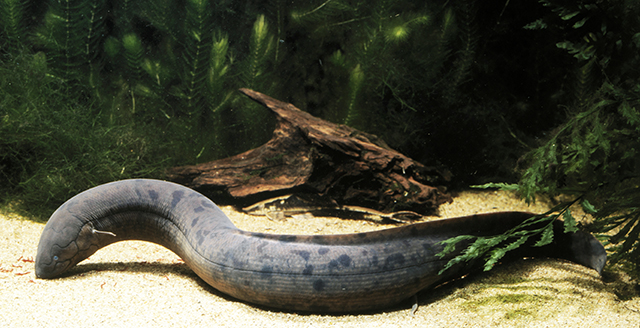| Lepidosirenidae (Aestivating lungfishes) |
| 125 cm TL (male/unsexed); max. reported age: 8 years |
|
demersal; freshwater |
| South America: Amazon, Paraguay and lower Paraná River basins. |
|
|
| Prefers stagnant waters where there is little current. Juveniles feed on larval insects and snails. Adults are omnivorous and feed on aquatic vertebrates, invertebrates such as snails, clams and shrimp, and algae (Ref. 36739). Can survive low oxygen levels in its habitat by means of its very reduced branchial apparatus. It possesses two lungs without bronchial tubes. During the dry period, this species burrows into the mud, to a depth of about 30-50 cm, and seals off the entrance with clay, leaving out 2-3 holes for aeration. It reduces its metabolism during this period of hibernation. The fish are obligate air-breathers and will drown if denied access to the surface (Ref. 36739). During the rainy season, reproduction begins. The parents gather vegetal debris in a burrow (about 1.5 m long) to create a nest. During reproduction, males guard the young. These males can increase the oxygen level in the burrow because during breading season the pelvic fins develop highly vascularized, gill-like, feathery structures which perform a function opposite to those of gills: they releases oxygen from the blood and take in carbon dioxide; the filaments disappear after the end of the breeding season (Ref. 12225, 36739). The young look like amphibian tadpoles with four external gills. During the first weeks of their life they breath only through the external gills; at an age of 7 weeks they become air-breathing and regression of the external gills begins (Ref. 27188, 36739). |
|
Least Concern (LC); Date assessed: 21 October 2020 Ref. (130435)
|
| harmless |
|
Source and more info: www.fishbase.org. For personal, classroom, and other internal use only. Not for publication.

